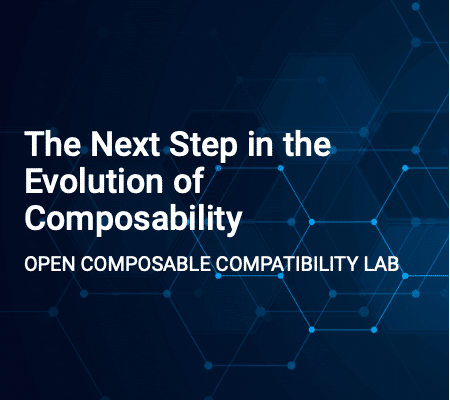NVMe™ is the protocol of today, but it’s also the foundation for next-gen IT infrastructure. End-to-end NVMe is likely in your future, but when and how do you take the next step? New solutions on the market point to why it’s time to take advantage of NVMe and reap the benefits of NVMe-oF™ today – here are five reasons.
1. NVMe Lets You Take Off the Ski Boots and Sprint in Running Spikes
NVMe in itself is a performance gamechanger. Flash storage has always been faster than disk drives, but since it has been deployed in mainstream data center environments it has always been held back by the interface. SAS and SATA were a good starting point because it enabled SSDs to look like the disks they were replacing. But those interfaces were designed for disk and simply can’t handle the performance capability of flash storage. It’s a bit like asking an Olympic sprinter to wear ski-boots.
The introduction of the NVMe interface for SSDs was the next step. It is designed for flash with increased bandwidth, efficiency and parallelism that can exploit the inherent low latency of NAND.
NVMe SSDs are undergoing continuous improvements, and the standard is regularly enhanced with new features and specifications (such as ZNS). Our latest Ultrastar® DC SN840 is our third-generation solution with a vertically integrated in-house NVMe controller, firmware and 96-layer 3D TLC NAND technology. With low latency and dual-port high availability, it’s a future-ready solution that lets you power new, data-intensive applications.
2. NVMe-oF: Extending NVMe Performance Outside the Server
In a data center environment, NVMe SSDs are doing a great job accelerating server workloads, but there’s a problem. To benefit from the speed of NVMe, the SSDs need to sit on the PCIe bus, close to the processors or locally attached. The PCIe bus cannot be extended outside the server and so while each server can be individually accelerated, that leads to mini silos of SSDs that cannot be easily shared between hosts.
Enter NVMe-over-Fabrics, or NVMe-oF, the next step in data center infrastructure improvement. NVMe-oF allows NVMe-based storage to be shared between hosts at comparable performance to locally-attached SSDs.
So how fast is it? Today we announced not only our latest enterprise-class NVMe SSD the Ultrastar® DC SN840 but also an all NVMe JBOF (Just a Bunch of Flash) the OpenFlex™ Data24 NVMe-oF Storage Platform. Our SAS-based Ultrastar 2U24 Flash Storage Platform was always considered very fast with 4.7M IOPS, 25GB/s bandwidth and sub-millisecond latency. While we don’t yet have final performance numbers for the OpenFlex Data24, the early projections are outstanding. Based on our testing in the lab so far, we should see performance up to 13.2M IOPS, 70.7GB/s bandwidth and as little as 42 microseconds of write latency. That is the power of NVMe applied to storage that can be shared by multiple hosts.
3. Faster or Less Expensive – Pick Two
We’re used to more performance costing us extra. But with OpenFlex Data24, that idea is history.NVMe-oF supports significantly higher performance-intensive workloads at a lower price. In fact, we are projecting around 17% savings compared to a SAS JBOF. This stems from our vertical integration and silicon-to-systems mindset. I mentioned the new SSDs are vertically integrated from raw NAND to controller and firmware, but the entire OpenFlex Data24 is an in-house design, including the RapidFlex™ NVMe-oF controllers and ASICS.
4. Advanced Connectivity Options Make Adoption Easier
A JBOF is a fairly common approach to sharing storage, where multiple servers can share the resource. Storage can be allocated and reallocated according to the needs of the applications. And, some ways to do this are easier than others.
The OpenFlex Data24 is 2U enclosure that holds up to 24 DC SN840 NVMe SSDs for a raw capacity up to 368TB.[1] It also contains up to six RapidFlex NVMe-oF controller cards. These cards offer several advantages for connectivity, including ultra-low latency, 100Gb Ethernet (screaming performance that you can likely already leverage today), and, low-power.
Up to six hosts can be directly attached without a switch, but the connectivity increases dramatically with a switched fabric for greater flexibility and maximum utilization.
5. Your Stepping Stone to Composability
Efficiency is the name of the game, and composable disaggregated infrastructure is where the industry is headed. For us, it is part of our larger thinking about how new data infrastructure should look. Not just composable, but also open and interoperable. As such, the OpenFlex Data24 is compliant with the Open Composable API and can be deployed as part of a composable disaggregated infrastructure.
We also founded the Open Composability Compatibility Lab (OCCL) with other industry leaders to promote the adoption and interoperability across the fabric-attached device ecosystem. You too can participate, just go to opencomposable.com.
From NVMe to NVMe-oF: It’s Time
The OpenFlex Data24, its NVMe-oF architecture, and the Ultrastar DC SN840 NVMe SSDs, offer great reasons for you to consider your next tech refresh and improve costs and efficiency by sharing SSD investment across servers. It’s time to kick off the ski boots and lace up your running shoes!
Considering NVMe-oF? Resources that Can Help
- Blog: Enabling Business with NVMe-oF™
- Get to know our portfolio of NVMe SSDs
- Read the OpenFlex Data24 Product Brief
- Understand the benefits of RapidFlex A1000
[1] One terabyte (TB) is equal to one trillion bytes. Actual user capacity may be less due to operating environment.





